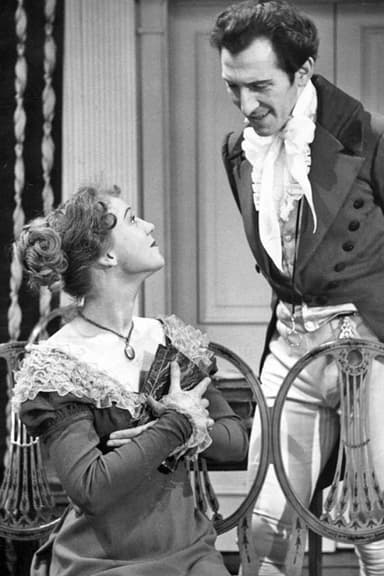
Sense and Sensibility
1981 • Drama
A story of two sisters attempting to find happiness in the tightly structured society of 18th century England. Elinor, disciplined, restrained and very conscious of the manners of the day, represents sense. Outspoken, impetuous, emotional Marianne represents sensibility.
Why you should read the novel
Reading Jane Austen’s 'Sense and Sensibility' offers an intimate journey into the heart of Regency England, where subtle social observations and sparkling wit come alive through the author’s distinctive voice. The novel allows readers to immerse themselves in the intricate emotions and internal thoughts of Elinor and Marianne Dashwood, something no adaptation can fully capture. Through Austen’s prose, one experiences not only romance and heartbreak, but also the nuances of familial duty and individual desire that resonate as powerfully today as they did two centuries ago.
The richness of Austen’s language presents sharp social commentary and timeless humor that television adaptations often streamline for brevity. Each page brims with dialogues and narrative depth, offering layers of meaning that reward both casual readers and those who delve deeper into the subtext. Austen’s careful construction of character relationships invites readers to savor each development and draw their own conclusions about virtue, sense, and sensibility.
While the 1981 series remains a careful adaptation, reading the original novel invites a direct connection with Austen’s world and her brilliant understanding of human nature. The book’s pacing allows for reflection and engagement, painting a far more nuanced portrait of Regency society and the transformative journeys of its unforgettable heroines.
Adaptation differences
The 1981 BBC adaptation of 'Sense and Sensibility' condenses many aspects of Jane Austen’s intricate plot to fit the episodic television format. Significant scenes, such as extended conversations between characters or some background on secondary figures, are shortened or omitted entirely to keep the story moving within runtime constraints. This necessarily reduces some of the narrative complexity and richness present in the novel.
Additionally, characterizations in the series differ subtly from Austen’s text, with certain traits heightened for dramatic effect or clarity. For example, Marianne’s emotional outbursts and Elinor’s reserved nature might seem more pronounced on screen, whereas the novel presents these characteristics with greater nuance. Supporting characters such as Mrs. Jennings and John Dashwood are also depicted with broader strokes, sometimes transforming multi-dimensional book personalities into more straightforward figures for television.
Another key difference lies in the depiction of internal thoughts and motivations. Austen’s prose provides readers with direct access to her characters’ feelings and reflections, which are often conveyed through internal monologue, free indirect discourse, or letters. The TV series, by necessity, transforms these internal musings into dialogue or visual cues, which can dilute the subtlety of character development and the depth of emotional struggle.
Finally, the resolution of certain plotlines and relationships may feel more conclusive or simplified in the adaptation than in the original novel. The gradual changes in Marianne’s and Elinor’s attitudes toward love and duty, for instance, span many pages in the book but are accelerated for television. As a result, viewers might miss some of the poignant emotional growth and social commentary that make Austen’s 'Sense and Sensibility' a literary masterpiece.
Sense and Sensibility inspired from
Sense and Sensibility
by Jane Austen



















